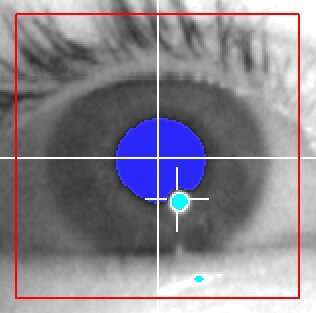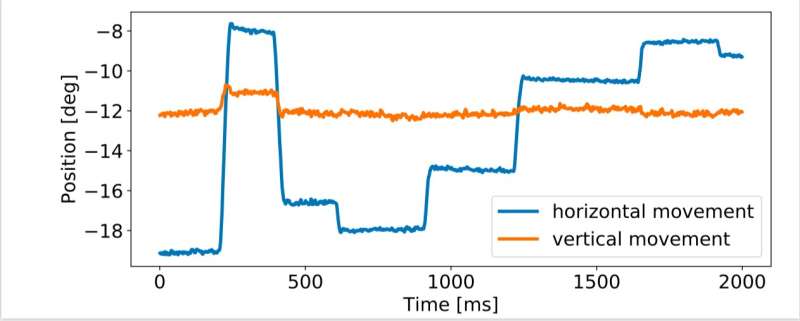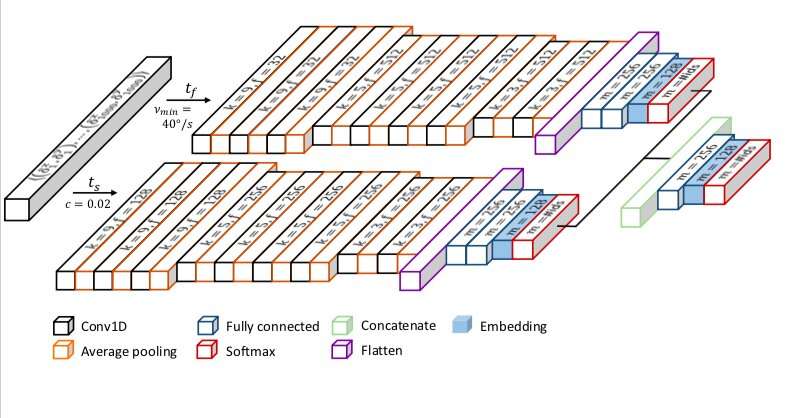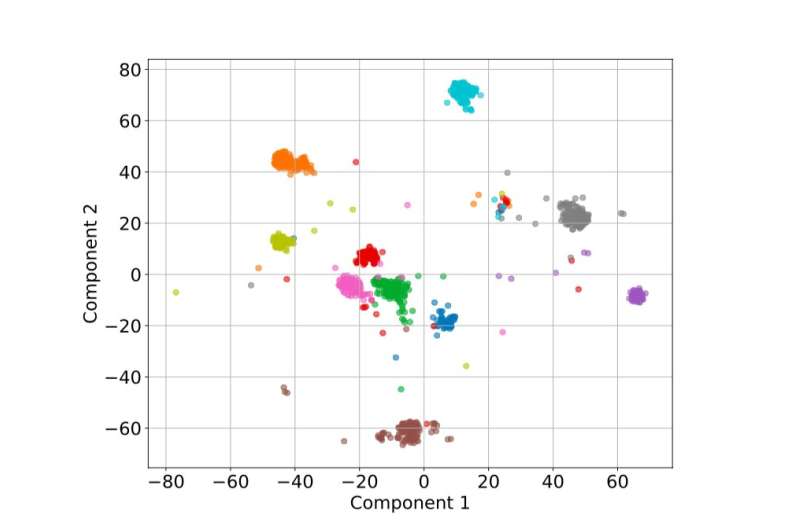July 16, 2019 feature
DeepEyedentification: identifying people based on micro eye movements

Past cognitive psychology research suggests that eye movements can differ substantially from one individual to another. Interestingly, these individual characteristics in eye movements have been found to be relatively stable over time and largely independent of what one is looking at. In other words, people present different patterns in the way they move their eyes and these unique 'eye movements' could be used as a means for identification.
Fascinated by these observations, researchers at the University of Potsdam, in Germany, have recently developed a new biometric identification method that works by processing micro-movements of the eye. In their study, pre-published on arXiv, they carried out a thorough investigation of people's involuntary eye movements and used their findings to develop DeepEyedentification, a deep learning architecture that can identify people by analyzing eye-tracking signals.
The idea of identifying individuals based on their eye movements has been around for more than a decade, yet the methods proposed so far come with significant limitations. For instance, most of these methods are not very accurate or take too long to reach a conclusion (i.e. require long eye movement recordings of around one minute), which makes them fairly impractical for real-world applications.
"In psychological research, it is standard to preprocess the eye movement data into different types of eye movement," Lena Jäger, one of the researchers who carried out the study, told TechXplore. "Previous biometric methods have adopted this practice at the cost of a great loss of information that is present in the raw eye movement data such as a high-frequency tremor of the eye. Our key idea was to make use of these high-frequency characteristics and not pre-process data, but rather train a deep convolutional network in an end-to-end fashion using the raw samples collected at 1000 frames per second as input."

In their study, Jäger and her colleagues showed that non-preprocessed eye tracking data leads to far higher accuracy than that achieved by existing approaches, while also requiring shorter video feeds. The error rate of the DeepEyedentication network is lower by one order of magnitude and identification is faster by two orders of magnitude than the previously best-performing method.
After recording only one second of eye movement data, the model had already achieved the same accuracy attained by the previously best performing model after 100 seconds of recording. Moreover, after five seconds of eye movement recording, the error rate was 10 times smaller. The researchers trained their network on two different data sets, one that they collected in a previous study where users read various texts, and another one collected as participants watched a dot randomly jumping on the computer screen.
"While viewing some stimulus on a computer screen (in our data sets a text or a jumping dot) a camera-based eyetracking device measures where the user is looking," Jäger explained. "This data was fed to a deep neural network that transforms it into an idiosyncratic representation of the user's eye movement behavior, which is independent of the specific stimulus on the screen."

Essentially, Jäger and her colleagues trained their model to identify features of eye movement data that are particularly useful for distinguishing between different individuals. Their model uses this idiosyncratic representation of the input data fed to it, along with other user data stored in the system, to either identify a user or reject him/her.
"We show that biometric identification based on eye movements has the potential to become a serious competitor for other widely used biometric identification methods, such as finger print, iris scan or face recognition or complement these techniques," Jäger said. "Crucially, biometric identification from eye movements is intrinsically less vulnerable to spoofing attacks. While iris scans, face recognition and fingerprints can be spoofed by 2-D or 3-D replicas (e.g. images, printed contact lenses, or 3-D replicas such as an artificial eye, a face mask or a fake fingerprint), spoofing eye movements would require a device that is able to display a video sequence in the infrared spectrum at a rate of 1,000 frames per second."
So far, the new biometric identification method developed by Jäger and her colleagues has achieved very promising results. In the future, it could help to increase the security of a vast array of devices, including smartphones, laptops and tablets. As this new approach works independently of what a user is looking at, the researchers could easily add a so-called 'liveliness detection module,' which would further increase its security. Such a module would automatically check whether a user's eye movements match a visual stimulus presented on the screen, which would not be the case if someone was trying to spoof the system using a pre-recorded video.
"We are currently working with high-resolution and high sampling frequency eye trackers under laboratory conditions," Jäger said. "Our next step is to develop an algorithm that can also deal with noisier data and lower sample rates under realistic conditions. This is necessary to make biometric identification from eye movements affordable and applicable to a wide range of real-world applications."

More information: Deep eyedentification: biometric identification using micro-movements of the eye. arXiv:1906.11889 [cs.CV]. arxiv.org/abs/1906.11889
A discriminative model for identifying readers and assessing text comprehension from eye movements. arXiv:1809.08031 [cs.LG]. arxiv.org/abs/1809.08031
© 2019 Science X Network


















